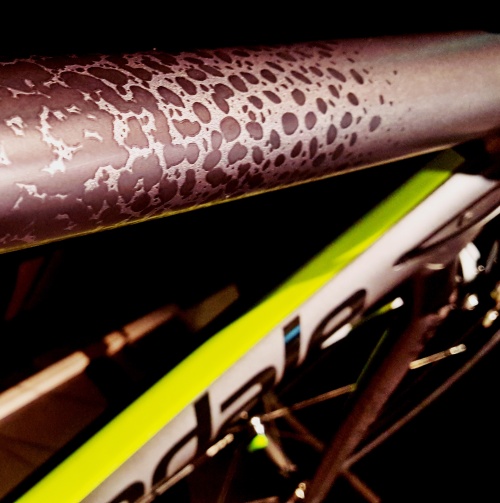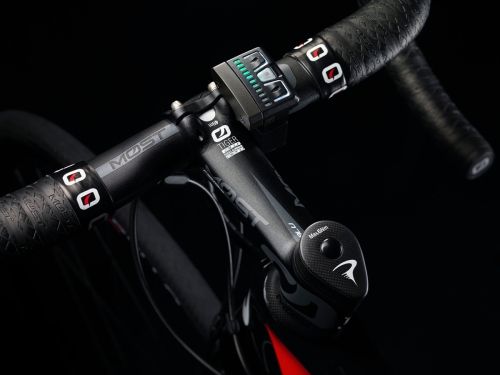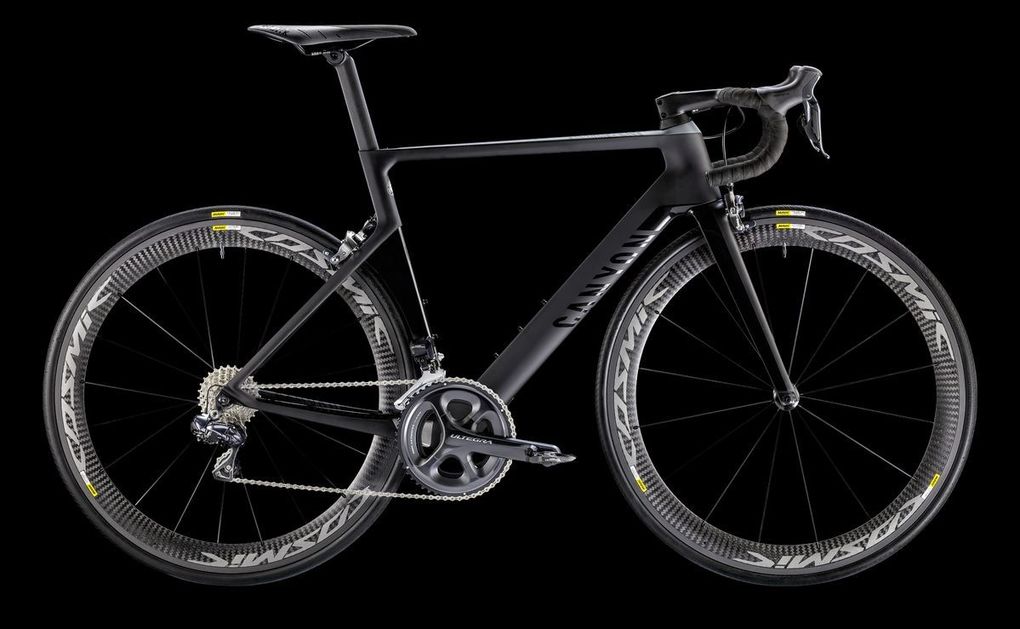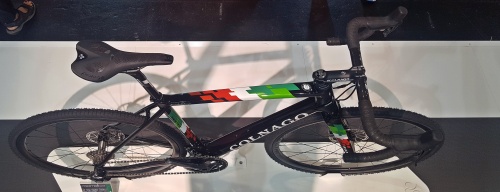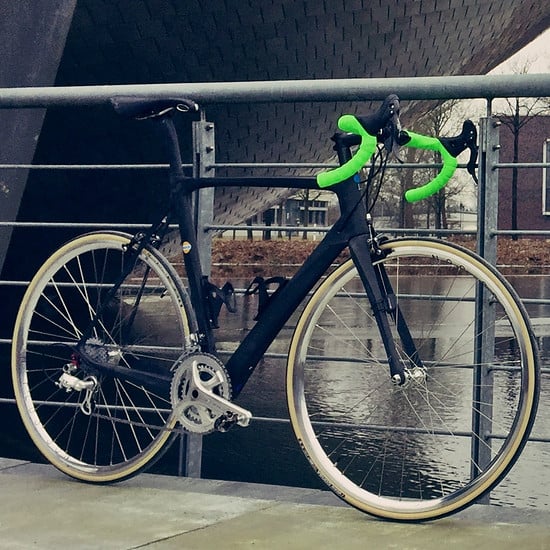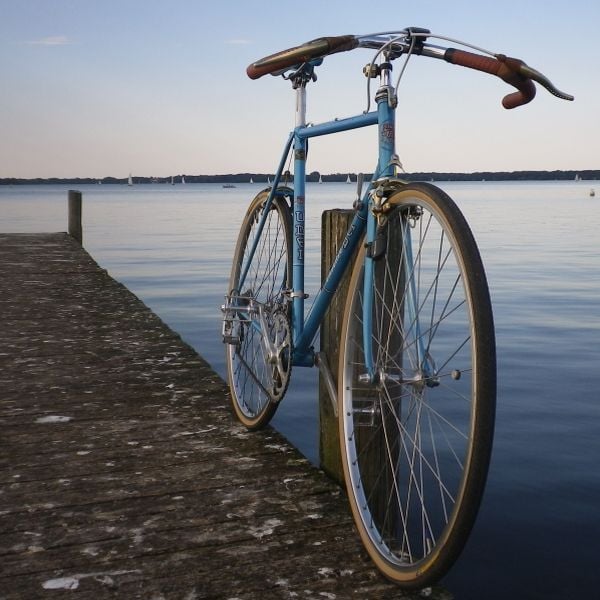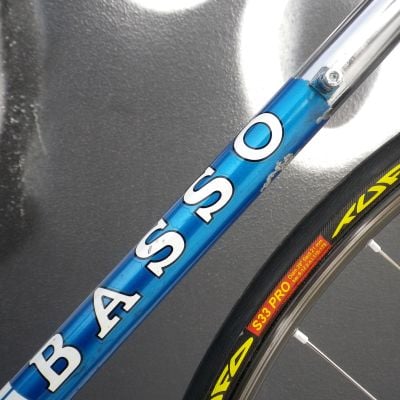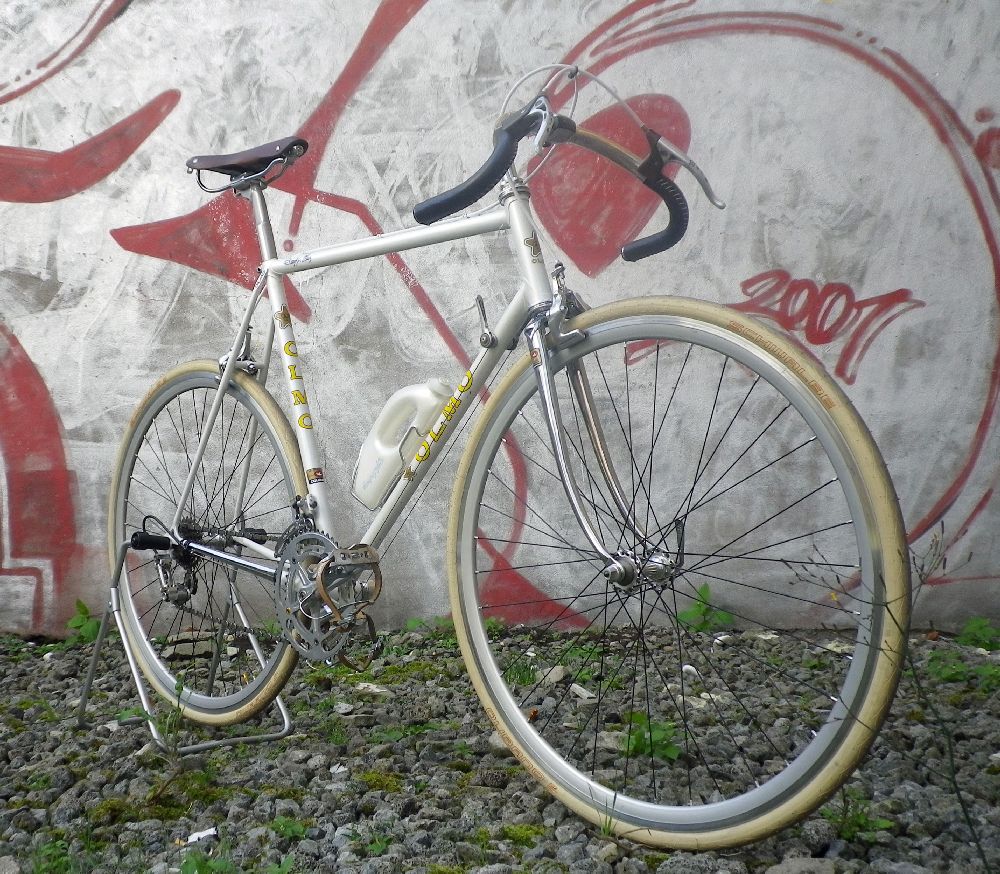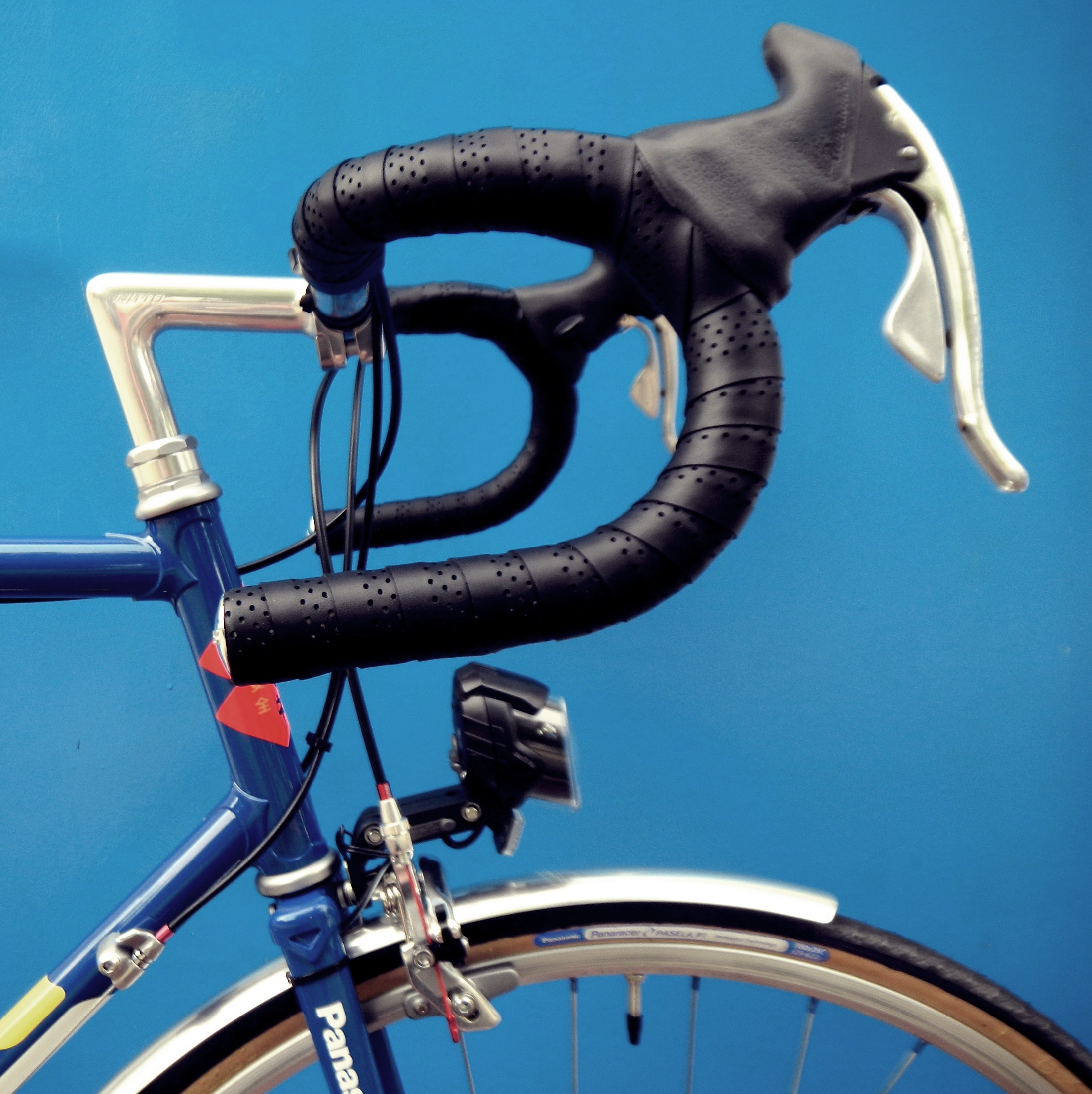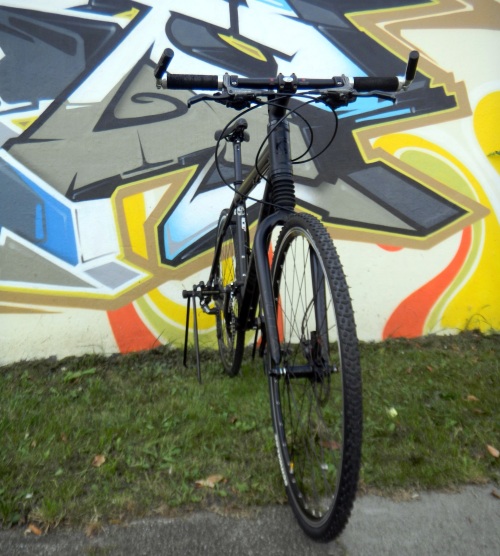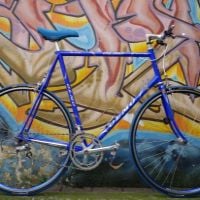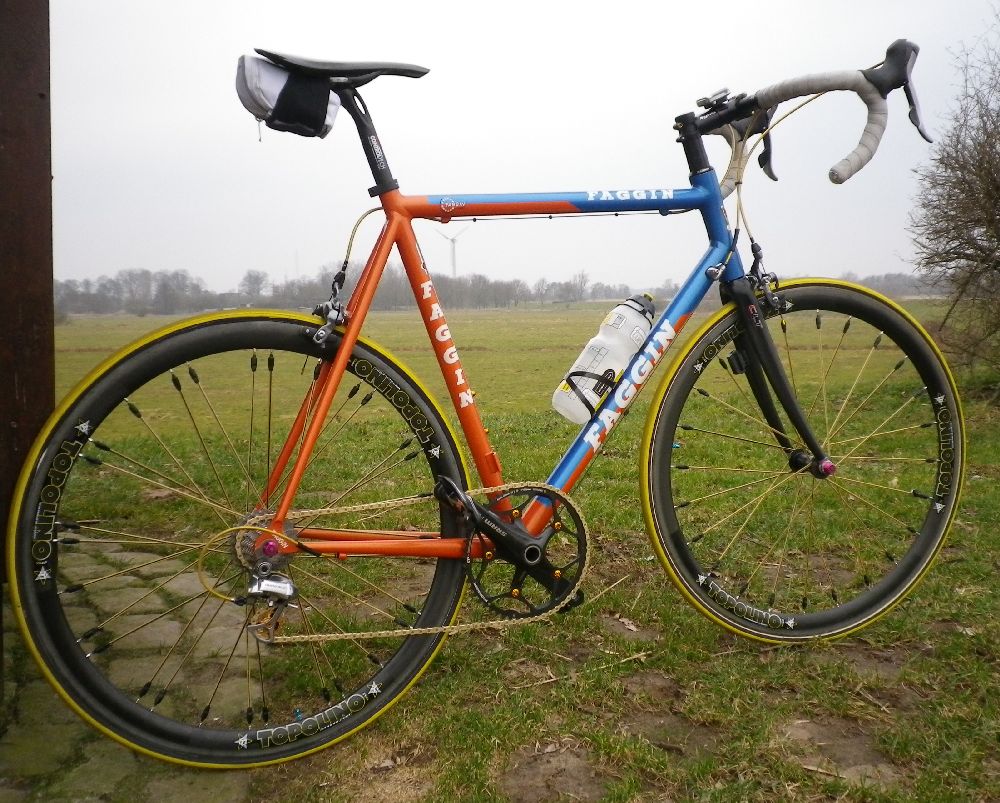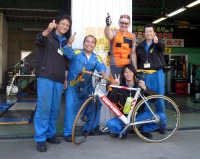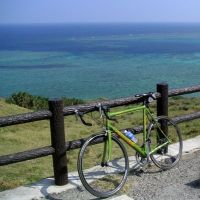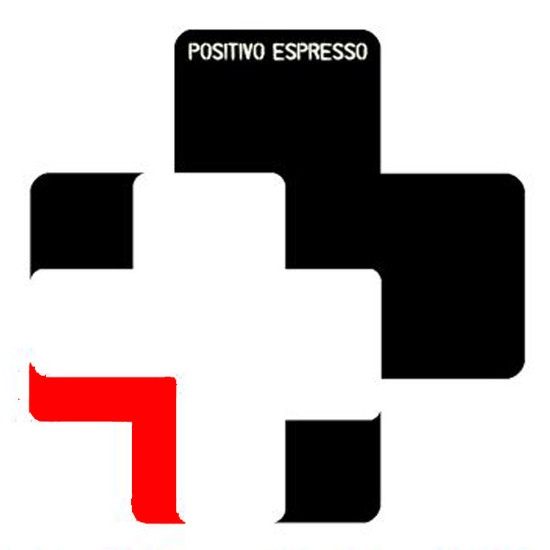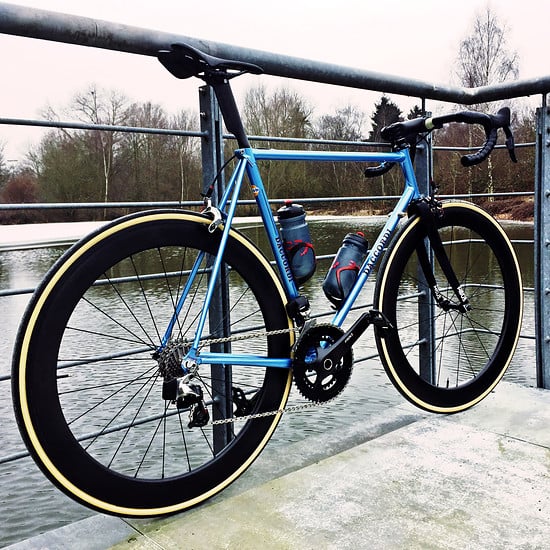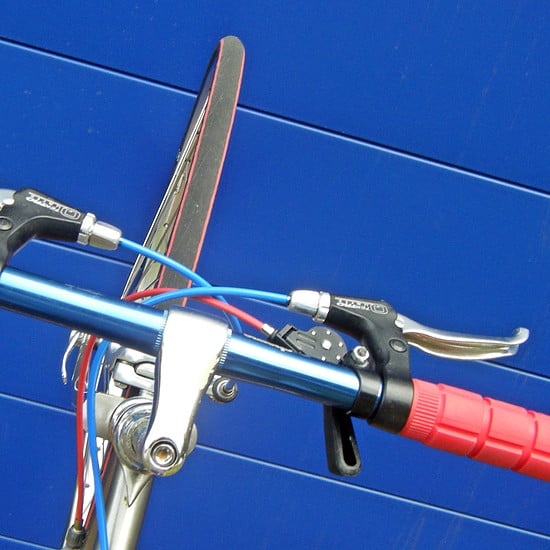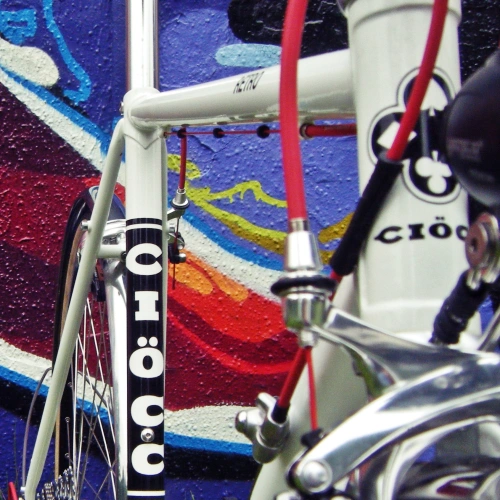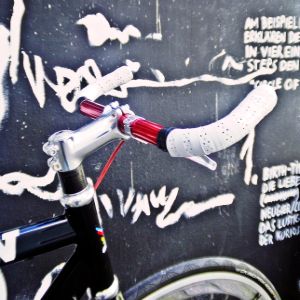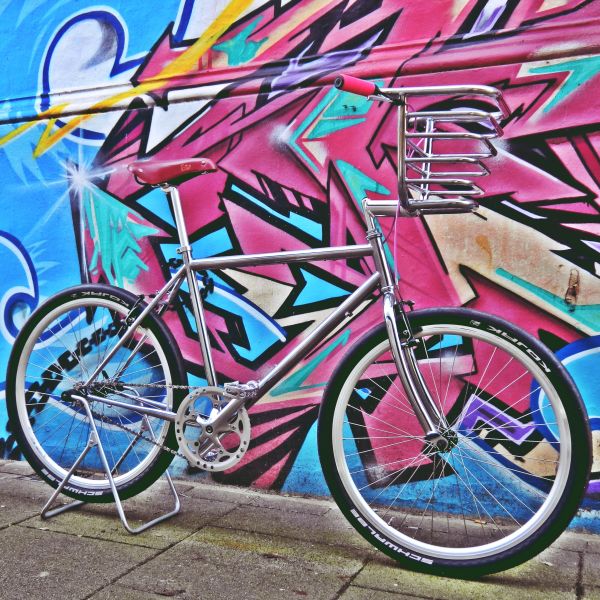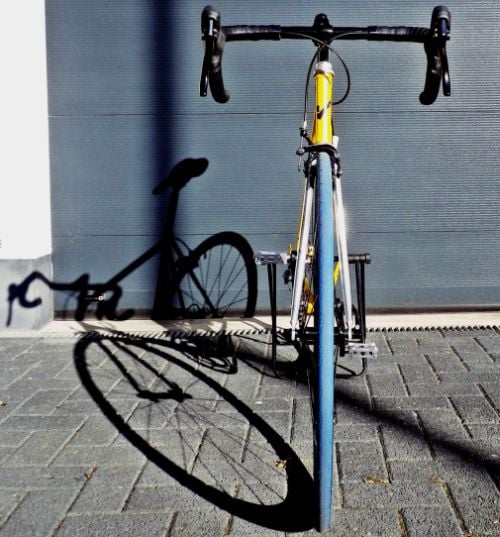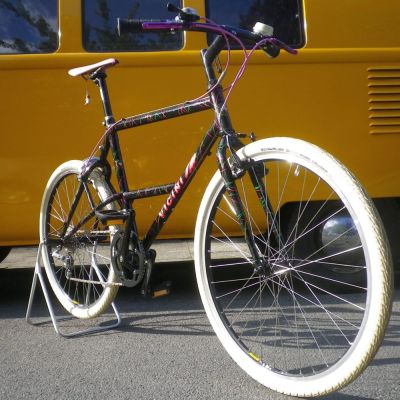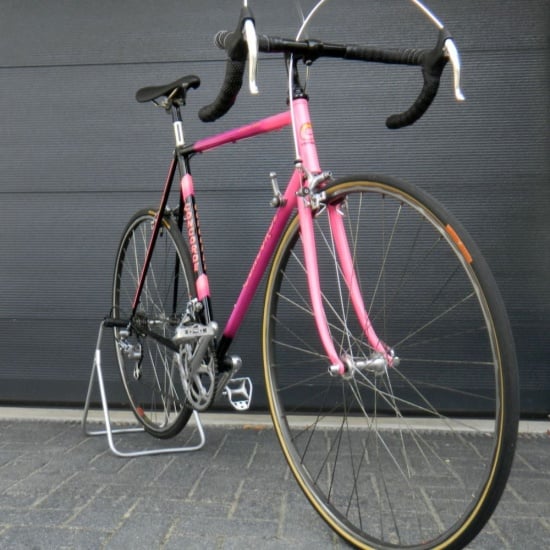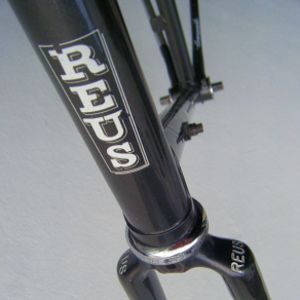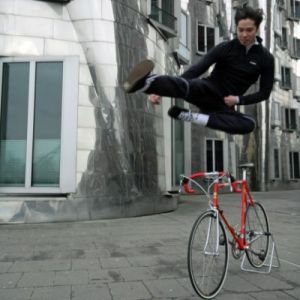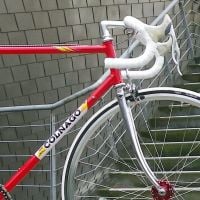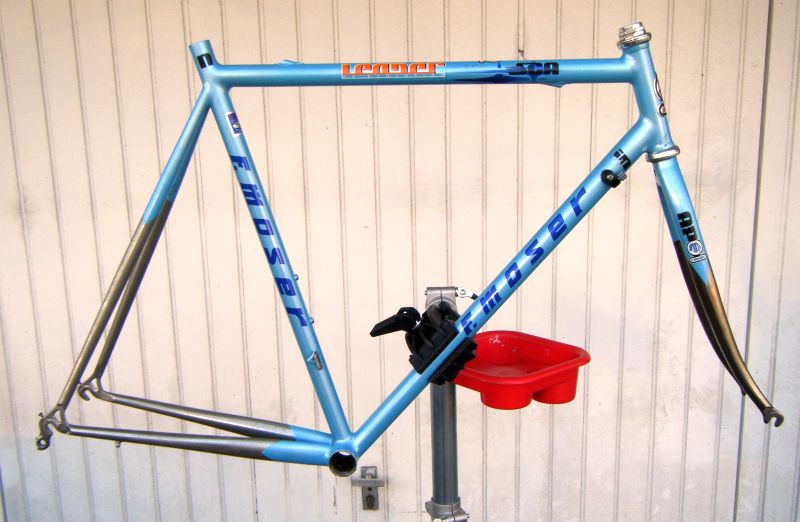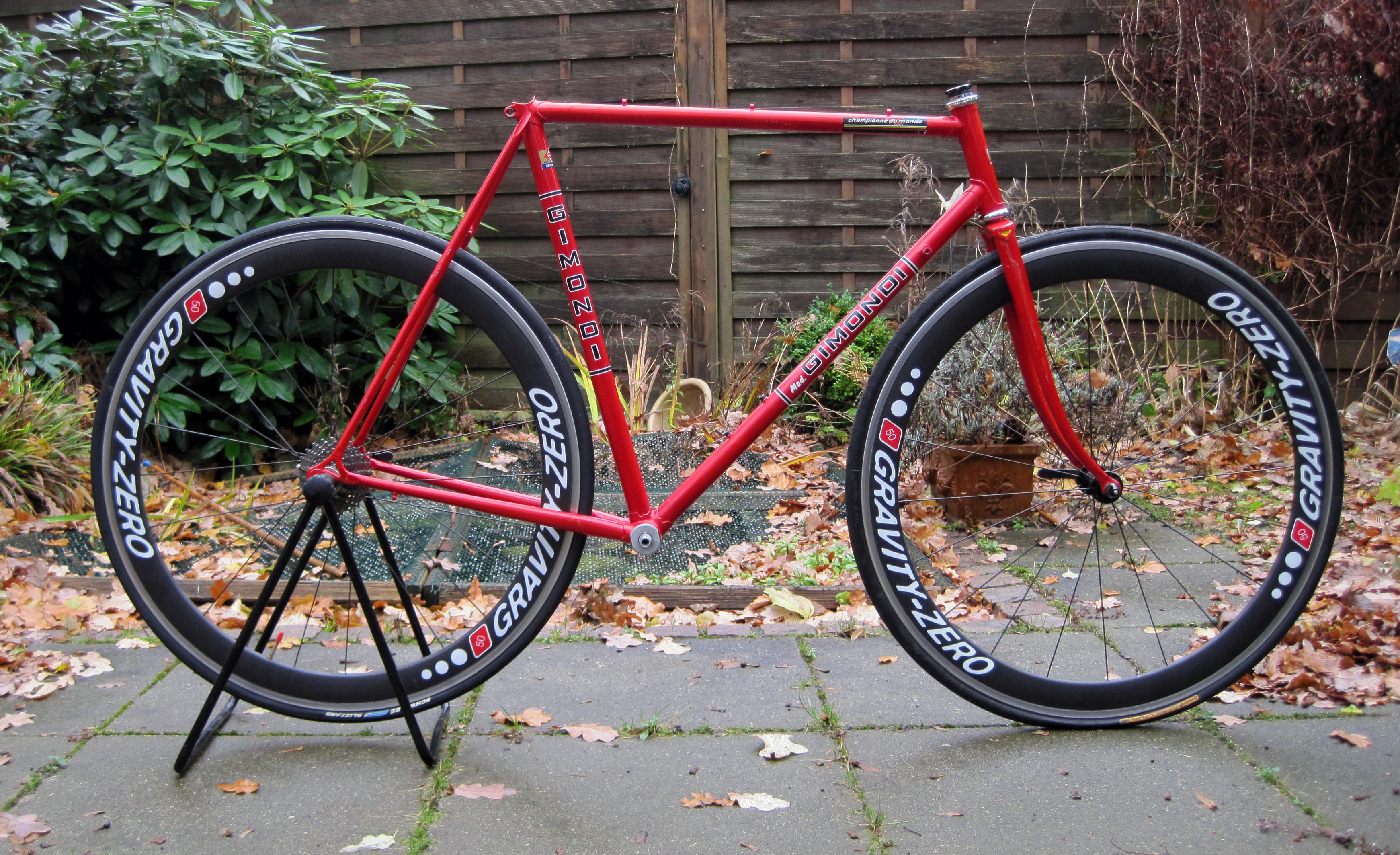In den letzten Wochen haben wir eine Reihe von Herstellermessen und nicht zuletzt die Eurobike in Friedrichshafen besucht, um Räder für unser neues Geschäft in Bremen auszusuchen. Eine willkürliche Auswahl von acht besonderen Rädern.
Wer die Details nachlesen möchte kann dies gerne hier tun, denn wir waren bei Cannondale, bei Trek, bei Liv und bei Giant, bei Derby Cycles (Focus und Cervelo), bei Hartje und zuguterletzt auf der Eurobike.
Wochen später ist es naturgemäß schwierig sich an alles zu erinnern, was gesehen wurde und eine irgendwie sinnvolle Einordnung und Auswahl vorzunehmen. Einerseits. Andererseits hatte ich eine Überdosis Rennrad mitgenommen und ein paar Tage so gar keine Lust mehr mich damit zu beschäftigen. Das ist zum Glück vorbei. Die acht vorgestellten Räder sind nicht die besten Räder überhaupt, die sinnvollsten für jeden, oder die tollsten für dich und mich. Es sind acht Räder, die sich von der Masse abheben und die mir aufgefallen sind. Dann mal los in beliebiger Reihenfolge:
Cannondale Synapse Carbon Disc Apex 1 SE

Zunächst einmal: Das Rad kann nichts für diesen Namen, in dem fast alles erwähnt wird, was denn an dem Rad drin und dran ist, OK? Deshalb nennen wir es hier einfach einmal „Helga“.
Warum ?
Also, dieses Rad ist die Eierlegende-Wollmilch-Helga und kann einfach alles: Schnell rasen auf der Strasse, mit breiten Reifen auf Wald- und Schotterwegen fahren und es hat clever versteckte Ösen, um es mit Schutzblechen und einem Gepäckträger nachzurüsten. Damit wird es zur Pendel-Helga, oder auch zur Winterschlampe. Ein Rad für alle Fälle. Man könnte auch sagen, es ist ein „Gravel Bike“ – das wäre die Kategorie, die die Branche für diese Räder erfunden hat. Was natürlich umgekehrt auch bedeutet, dass dieses Rad nichts wirklich gut kann. Und somit nichts ist für denjenigen, der bereits acht weitere in der Garage stehen hat.
Technisch ist das Rad im Geist der Zeit ausgestattet: Ein Carbon Rahmen mit einer Sram Apex Gruppe, die für den Gravel/Cross Bereich das ist, was die 105er für Rennräder wurde. Einfach Kettenblatt vorne (44 und 11-42 hinten), hydraulische Scheibenbremsen 160 mm, Steckachsen vorne und hinten, jede Menge Reifenfreiheit für die montierten 700x30C und alles irgendwie auf komfortabel getrimmt.
Dies ist ein blaues Rad. Es gibt viele blaue Räder, aber dieses hier ist mit seiner Farbe und seiner Schlichtheit eben wirklich ein sehr, sehr schönes blaues Rad, an dem auch der Cannondale Schriftzug dezent zurücktritt. In echt ist das noch schöner, als auf den Photos.


Ich wünschte, mehr Hersteller würden den Mut haben ihre Räder so zu gestalten, anstatt ein Rad schwarz zu lackieren, weil es angeblich die Konsumenten so verlangen. Außerdem sollte das gerade bei den günstigeren Rädern in der Preisklasse € 1.000 – 1.500 ein Muss sein, um den wahrgenommenen Mangel an hochwertigen Komponenten zu kompensieren.
Preis: € 2.899
Das Rad auf der Cannondale Website
Eine gute Alternative dazu mit Aluminum Rahmen ist das Synapse Disc 105 SE. Deutlich günstiger für € 1.499 komme es mit einer klassischen 105er Gruppe, mechanischen Scheibenbremsen und voll in ….. grau.
Trek Madone 9.0

Im Gegensatz zu den eher konventionellen Emonda und Domane Rennrädern von Trek, ist das Madone eher das Trek Superbike und für die meisten von uns unerschwinglich teuer. Das hat sich dieses Jahr zumindest etwas geändert, denn mit dem Madone 9.0 bietet Trek ein Ultegra ausgestattetes Madone für vergleichsweise günstige € 4.000 an.
Warum ?
Das Trek Madone 9.0 ist ein Rad zum Ballern in der Ebene. Wie ein 718 Cayman – der günstigste Sportwagen der im aktuellen Angebot von Porsche ist. An dem Rad ist alles zum schnell fahren gemacht: Steifer Rahmen, laut Tour auch aerodynamisch der beste, mit integrierten Felgenbremsen, Hochprofil-Laufräder, einem gehörigen Maß an Integration. Wenn Rennradfahren nur um Radrennen fahren gehen würde – das wäre mein Rad.
Wenn ich mir bislang die neuen Trek Räder angesehen habe, fand ich die nicht besonders ansprechend. Schaute ich mir die jedoch einige Jahre später an, so dachte ich oft „Wow, was für ein schönes, ikonisches Rad seiner Zeit. “ Ein gutes Beispiel dafür finde ich das Trek 5500 in der US Postal Lackierung mit Rolf Prima Laufrädern. Das Madone hingegen, hat mir von Anfang an gut gefallen. Es ist massiv und hat mit einem klassischen Rennradrahmen aus Stahl wirklich gar nichts mehr zu tun. Alles an dem Rad ist groß, kantig und steif und erinnert eher an eine Ducati, als an ein Colnago.
Zumal Trek mit der Hausmarke Bontrager auch einen Vorteil gegenüber den Konkurrenten wie Cannondale, Giant, Fuji oder Specialized hat. Mit anderen Worten: Bontrager war eine eigenständige Marke, bevor Trek sie gekauft hat und hat sich einen guten Ruf erarbeitet; im Gegensatz zu Fabric / IS (Cannondale); Contact (Giant), Oval (Fuji) oder S-Works (Specialized). Gerade bei höherpreisigen Rädern ist die Akzeptanz von Hausmarken vermutlich nicht stark ausgeprägt.

In Ulm auf der Trek Messe bin ich das Madone 9.9 gefahren, was etwa doppelt so teuer ist, deutlich mehr Integration hat und somit einen Vorbau bietet, auf dem man notfalls auch einen Dönerteller parken kann.

Dazu gibt es das Madone 9.0 in vier verschiedenen Farben (allerdings nicht in Deutschland, hier begnügt man sich und somit dich und mich mit schwarz/grau), von denen mir das klassische Trek-Segafredo Rot und das Radiaoactive Yellow am besten gefallen. Das finde ich von Trek übrigens sehr gut, dass die von einem Model mit der gleichen Ausstattung mehrere Farbvarianten anbieten – viele Hersteller machen das nicht (dazu später mehr). Und über Project One hat man zusätzlich noch die Möglichkeit zur farblichen Individualisierung des Rades.
Preis: € 3.999
Das Madone 9.0 auf der Trek Website
Trek Zektor 3

Nachdem wir mit dem Madone 9.0 ganz schön abgehoben haben, kommen mir mittels Schwerkraft und Verkunft zum Trek Zector 3. Ich denke die Adjektive „vernünftig“ und „hübsch“ treffen dieses Rad am besten.
Warum ?
Wir können nicht ständig und immer mit dem Rennrad in voller Lycra Ausrüstung und Rennradschuhen durch die Gegend fahren. Ab und an müssen wir zur Arbeit, zum Supermarkt, oder zum Weserstadium. Und da wollen wir nicht mit dem Hollandrad der Frau fahren, sondern auch sportlich unterwegs sein. Und wenn dann eine Schramme an den Rahmen kommt, oder das Rad geklaut wird, dann darf uns das nicht in eine schwere Depression fallen lassen, weil gerade virtuelle € 3.999 von uns gegangen sind.
Da kommt das Trek Zektor 3 auf den Plan. Das Rad kostet weniger als magische € 1.000, fährt sich aber trotzdem sportlich mit einer so gerade noch akzeptablen Sora 9-fach Gruppe. Aber es hat auch hydraulische Scheibenbremsen, 32er Reifen und jede Menge versteckter Ösen, um es mit Schutzblechen, Gepäckträger und sogar einem Ständer nachzurüsten. Und durch einen Adapter am Vorbau kann man einfach Zubehör wie einen Tacho, oder eine Lampe anbauen, ohne dass das wie angeklemmt aussieht.

Am besten gefällt mir das filigrane an dem Rad, insbesondere die Vorderradgabel. Und obwohl die Hauptfarben des Rades zweierlei Grau sind, hat es Trek geschafft auch bei einem günstigen Rad durch das Setzen von „Volt-Grünen“ Akzenten am Hinterbau und an der Gabel etwas besonderes zu erschaffen.
Das Rad ist definitv kein Superbike und manch einer mag hier denken: Was juckt mich dieses Ding? Ich finde es ist dennoch ein gelungenes Beispiel für ein günstiges Rad, das toll aussieht und einiges drauf hat.

Preis: € 849
Gibt es auch als Damenrahmen mit hellblauen Akzenten.
Das Zektor 3 auf der Trek Website
Liv Langma Advanced Pro Disc

Mit der Marke „Liv“ möchte sich Giant von den Konkurrenten abzusetzen: Keine Männerräder im WSD = Women Specfific Design“, sondern teilweise komplett neu entworfene Rahmen mit eigener Geometrie und eigenem Design. Manchmal geht das farblich nach hinten los – aber nicht bei diesem Langma.
Warum ?

Wie bitte? Man schaue sich dieses Rot an. Einfach nur schlicht rot – wie ein Lippenstift. Und kein Firlefanz oder unnötige Decals.
Hier hat jemand einmal nachgedacht, welche Farbe einer Frau gefallen könnte die nicht Pink ist und voll meinen Geschmack getroffen! Jetzt weiß ich zwar nicht, ob dieses Rad Frauen gefallen würde – auch wenn die ersten Rückmeldungen positiv waren. Aber ich kann mit Bestimmheit sagen, dass ich mich in absolut jede Frau direkt verlieben würde, die auf diesem Rad sitzt.
Und ich mag die Idee, dass das Langma aussieht wie ein halber, klassischer Damenrahmen. Als „Herr“ bin ich ein Freund des horizontalen Oberrohrs, aber die Idee ein modernes Damenrennrad mit stark abfallendem Oberrohr zu entwerfen finde ich sehr originell und charmant.
Technisch ist das alles sinnvoll zusammengestellt: Ein Carbonrahmen mit mittelhohen (30 mm) Carbonrädern, Tubeless Reifen und einer Ultegra 11-fach Ausstattung. 140 mm hydraulische Scheibenbremsen mit Steckachsen hinten wie vorne. Alles Zeitgeist im Trend. Und dies beinhaltet leider (und das ist auch für fast alle anderen Räder 2018 wahr) diese schrecklichen Vier-Arm Shimano Kurbeln in Form von Teerklumpen und nicht ausgereifte Pressfit Lager mit Akkustik-Funktion.
Was ist eigentlich an so einem Vierkantlager für Hobbyfahrer nicht akzeptabel? Oder Hollowtech/GXP etc.? Warum Pressfit in seinen 101 Abarten?
Egal, bitte mehr von diesem Rot.
Preis: € 3.999
Das Langma auf der Liv Website
Einen ähnlichen, günstigeren Rahmen gibt es auch ohne Scheibenbremsen mit Ultegra oder 105er Ausstattung – leider in schwarz.
Giant TCR Advanced Pro 1 Disc

Weiter in die Mänerabteilung bei Giant, die anders als bei einem Schuhladen, auf der Giant Ausstellung in Bad Hersfeld nicht in den Keller, oder in das 2. Obergeschoss verbannt wurde. Dort stehen die Propel (Aerorad), TCR (Normal) und Defy (Komfort) Räder, sowie ein paar weniger interessante Räder (Trinity, Contend, Omnium). Giant, die ja einmal sehr gut in der Produktion von Alu-Rahmen waren, haben mittlerweile voll auf Carbon gesetzt.
Warum ?

Rein von Technik und Ausstattung, unterscheidet sich das Giant TCR nicht stark von den neuen Modellen anderer Hersteller in gleichen Segment, also z.B. dem Trek Emonda, dem Cannondale Synapse oder dem Canyon Ultimate: Ein leichter Carbonrahmen mit abfallendem Oberrohr, dazu mittelhohe Carbon Laufräder, 140 mm hydraulische Scheibenbremsen, Steckachsen hinten und vorne, neue Ultegra R8000 Ausstattung. Ach ja: Und Teerklumpen Kurbel, innenverlegte Züge und Pressfit Lager.
Mich hat das TCR besonders angesprochen, weil es einen sehr filligranen Rahmen hat, also so ganz anders ist, als zum Beispiel das Trek Madone. Und dazu eine sehr schöne, dunkle Lackierung in glänzendem blau-orange die nicht nach Aufmerksamkeit schreit.
Jedenfalls fand ich es so gut, dass ich es gleich für mich selber bestellt habe. Über die Fahreindrücke werde ich dann beizeiten einmal berichten.
Preis: € 3.340
Das Giant TCR auf der Giant Website
Basso Diamante SV

Olmo, Moser, Milani, Vetta, Milanetti, Bottechia, Masi, Gios oder Basso. Die Liste erstklassiger italienischer Marken ist lang. Deshalb war es für mich besonders interessant auf der Eurobike zu schauen, was diese Hersteller heute anzubieten haben. Präsent waren die letzten großen und (wie ich persönlich finde) unsympathischen Marken wie Colnago, Bianchi und De Rosa mit großen Ständen. Dann gab es noch kleinere, lebendige Marken wie Basso, Wilier und Guerciotti. Und dann war Schluss. Schade – ich hätte gerne Daccordi, Olmo, CIÖCC oder Pinarello in Augenschein genommen. Aber zunächst zu Basso.
Warum ?

Im Gegensatz zu vielen anderen, traditionellen italienischen Marken, ist Basso eine lebendige Marke deren Räder überwiegend in in Italien entwickelt, gefertigt und lackiert werden. In der Garage stehen zwei Basso Räder und beide fahren sich außergewöhnlich agil und schnell – trotz ihres Alters. Mit anderen Worten: Ich habe eine Menge positiver Vorurteile der Marke gegenüber.
Das Diamante SV ist das Spitzenmodell von Basso – und da es in Italien gefertigt wird ist es nicht gerade günstig. Dafür bekommt man technisch ein Rad auf dem Stand der Zeit mit ein wenig Integration. Insbesondere die Integration des Vorbaus und die Möglichkeit die Lenkerhöhe mit Spacern einzustellen ist clever gelöst. Dazu gibt es das Rad in vier verschiedenen Designvarianten und auch als Option mit Scheibenbremse.
Basso macht erstklassige Lackierungen – nicht nur in rot, weiß und grün.
Preis: Je nach Ausstattung teuer oder teurer. Am ehesten lohnt sich der Kauf eines Rahmens, um das Rad dann individuell aufzubauen. Oder die Komponenten vom Vorgänger gleich mit rüber zu nehmen.
Das Diamante SV auf der Basso Website
Wilier Cento10Air

Wilier war für mich eine der größeren Überraschungen auf der Eurobike Messe. Die hatten eine sehr gute Präsenz, viele schöne und orginelle Räder auf dem Stand stehen, die bei mir einen „haben-wollen“ Reflex auslösten. Leider ist Wilier nicht gerade flächendeckend in Deutschland vertreten, so dass es schwer ist seine Hände an ein Wilier Rad zu bekommen.
Warum?
Es gibt jede Menge schöne Räder bei Wilier und das Cento10Air ist nur eins davon. Es ist dazu eins, dass man vom Hersteller mit einer Campagnolo Ausstattung kaufen kann, im Gegensatz zu den Rädern von Trek, Cannondale, Giant etc…… kaum ein Hersteller hat noch Gruppen im Programm außer Shimano und Sram etap. Das macht Sinn, wenn man nicht den wesentlich teureren Weg gehen möchte, Rahmen und Komponenten Stück für Stück zu suchen, zu kaufen und zu montieren. Das macht auch Sinn, weil die Standardmodelle von Wilier bereits sehr schöne Designvarianten bieten und es dazu noch die Möglichkeit gibt individuelle Varianten zu konfigurieren. Und Wilier hat eines der großartigsten Logos in der Radsportszene.
Die blau/hell-grüne Version oben zum Beispiel hat ein sehr schönes, glänzend/mattes Finish, dass etwas an das Chromvelato früherer Zeiten erinnert.
Technisch ist das sowieso alles auf Höhe der Zeit.
Preis: laut Wilier ab € 4.750.
Das Cento10Air auf der Wilier Website
Wenn’s ein wenig günstiger sein, aber trotzdem gut und individuell aussehen soll:

GTR Team, ab € 1.900. Oder, in der gleichen Klasse wie das Trek Zektor 3: Das Jareen ab € 850.

CIÖCC Pro Race

Mehr als sieben Räder wollte ich nicht vorstellen, dann sah ich überraschend das Achte: Morgens im Wiegetritt Laden, als ein Stammkunde mit seinem CIÖCC Pro Race vorbei kam.
Warum ?
Es gilt alles, was bereits oben über das Wilier geschrieben wurde: Ein Rad, das nach Italien und Tradition aussieht, das eine schöne Lackierung hat, die man komplett in vielen Farbkombinationen individualisieren kann und dazu die Möglichkeit sich ein Rad mit Campagnolo Gruppe ohne viel Aufwand zu kaufen. Aber mit ein wenig Zeit, denn zwei bis drei Monate muss man bei CIÖCC auf eine Bestellung warten.
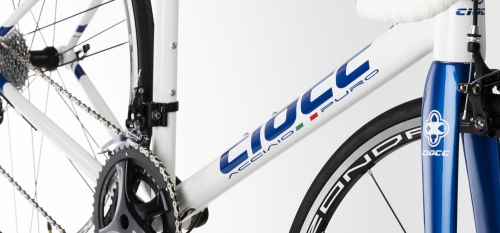
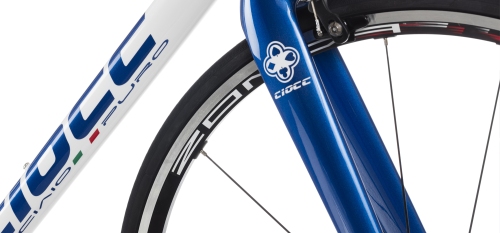
Das Pro Race hat einen muffenlos geschweißten Stahlrahmen mit einem leicht abfallenden Oberrohr. Nach so vielen modernen Rädern, die ich in den letzten Monaten gesehen hatte, war es schön einen schönen, traditionellen Stahlrahmen in einem guten Design zu finden. Der dann auch nicht Retro ist, sondern modern aussieht. Und als Option gibt es das Pro Race auch mit Scheibenbremsen.
Preis: unbekannt.
Das Pro Race auf der CIÖCC Website.
Acht Räder werden der Vielzahl an neuen Rädern für die Saison 2018 nicht gerecht, zumal ich mir einige Hersteller wie z.B. Specialized oder BMC gar nicht angesehen habe. Aber es ist eine gute Basis, sich eine eigene Meinung über die Trends 2018 zu bilden und lange regnerische Herbstabende am Notebook oder Tablet auf der Suche nach dem n+1ten Rad zu verbringen. Viel Spaß dabei.




